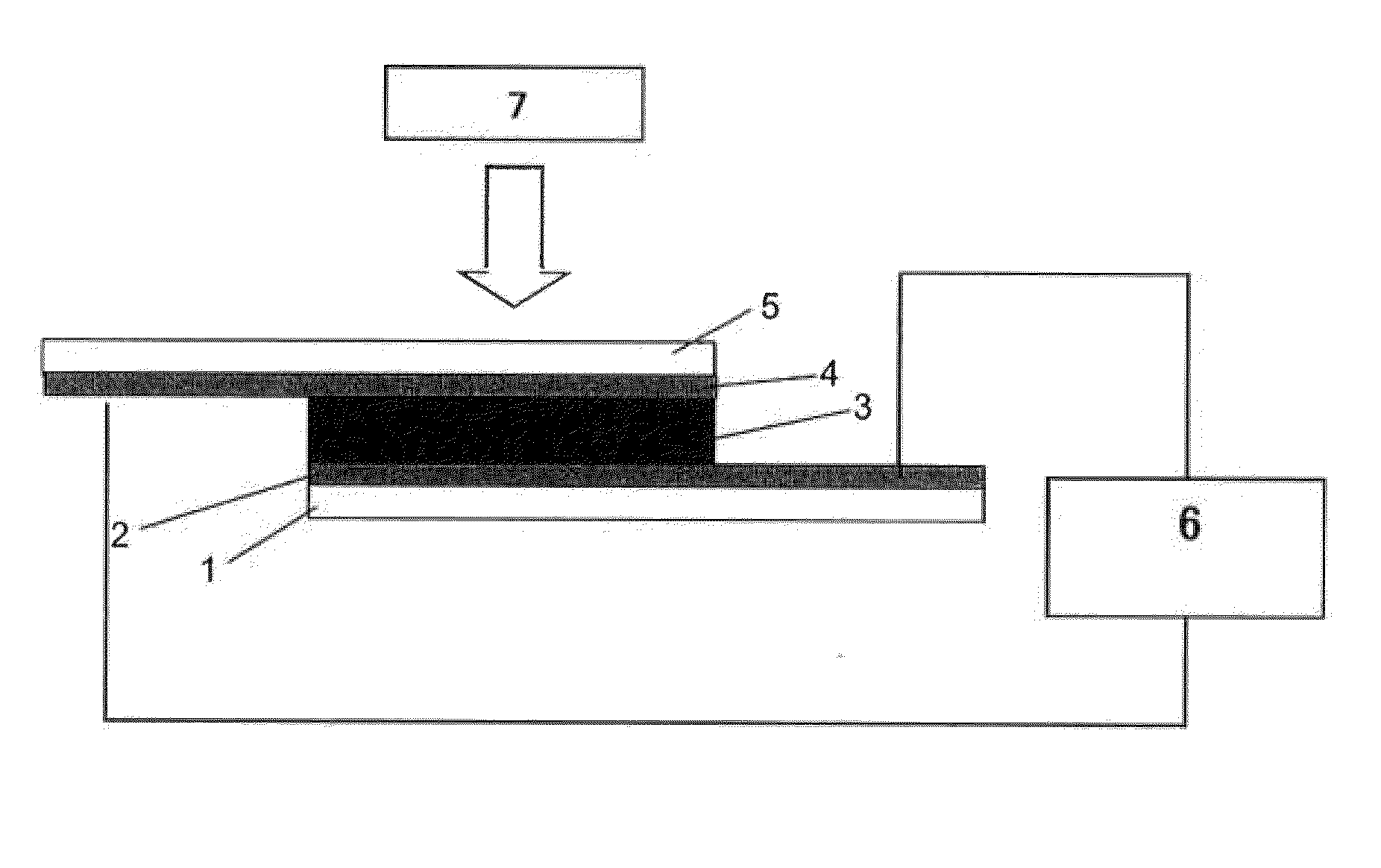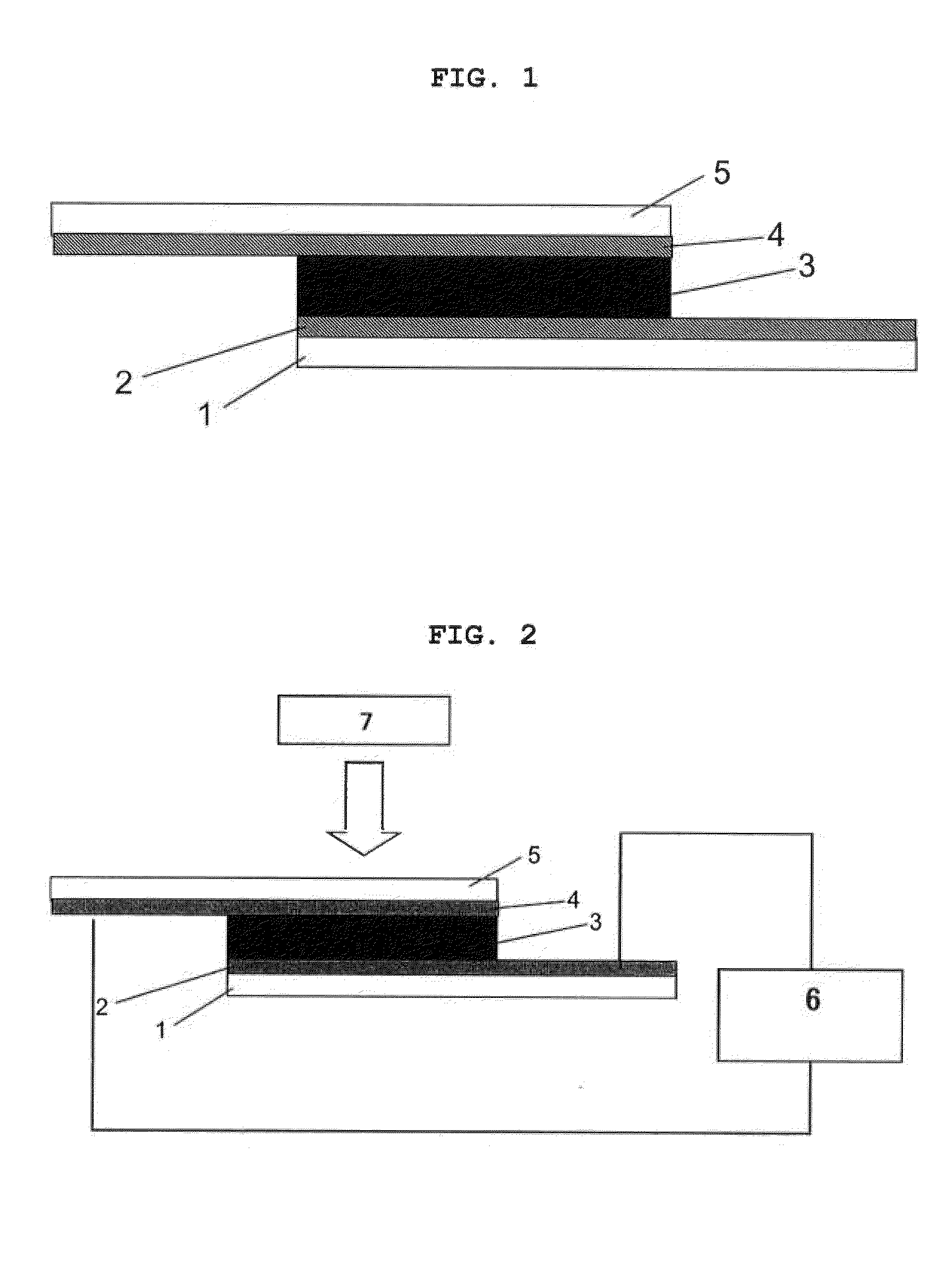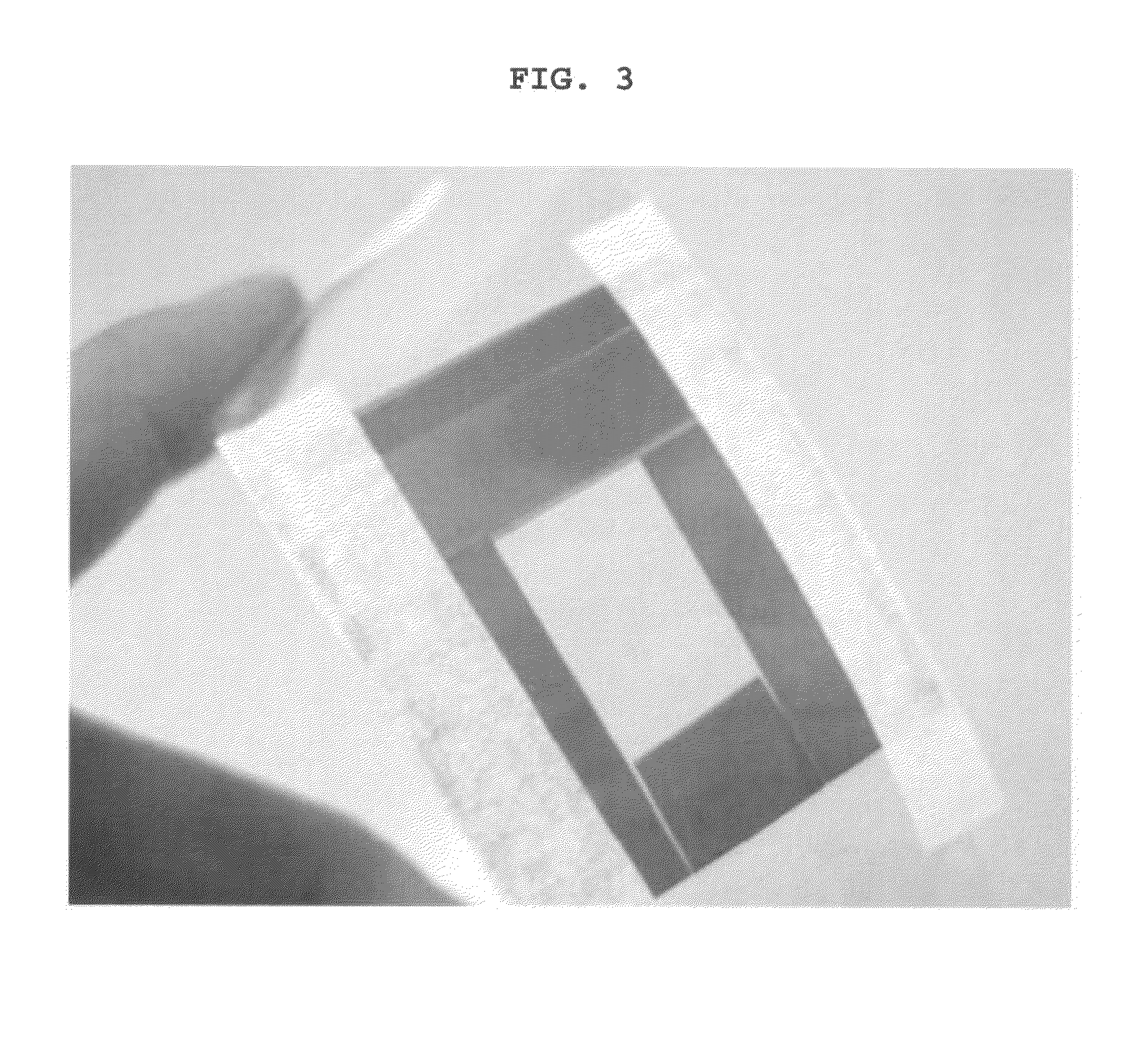Piezoelectric element
a piezoelectric element and piezoelectric technology, applied in piezoelectric/electrostrictive transducers, device material selection, synthetic resin layered products, etc., can solve the problems of inadequate technical development, poor film-forming ability, and inability to find appropriate materials for piezoelectric elements, etc., to achieve superior piezoelectricity and low cost
- Summary
- Abstract
- Description
- Claims
- Application Information
AI Technical Summary
Benefits of technology
Problems solved by technology
Method used
Image
Examples
synthetic example 1
Synthesis of γ-methyl-L-glutamic acid / γ-hexyl-L-glutamic acid copolymer
Step 1. Synthesis of poly-γ-methyl-L-glutamic acid
[0081]To 1,2-dichloroethane (410 ml, manufactured by Kanto Chemical CO., Inc.) was added N-carboxy-γ-methyl-L-glutamic acid anhydride (54.92 g, 293.45 mmol), and the mixture was cooled to 0° C. As an initiator, N,N-dimethyl-1,3-propanediamine (366 μl, 2.93 mmol, manufactured by Kanto Chemical CO., Inc.) was added, and the mixture was stirred at 25° C. for 1 day to give poly-γ-methyl-L-glutamic acid. The weight average molecular weight, Mw, was measured by Measurement Method 1 described below. The weight average molecular weight, Mw, was 1.9×104.
Step 2. Side chain substitution reaction of poly-γ-methyl-L-glutamic acid (transesterification reaction)
[0082]The poly-γ-methyl-L-glutamic acid (9.3 g) prepared above was dissolved in 1,2-dichloroethane (45 ml), 1-hexanol (16 ml, 130.00 mmol, manufactured by Tokyo Chemical Industry Co., Ltd.) and p-toluenesulfonic acid mono...
synthetic example 4
Synthesis of γ-benzyl-L-glutamic acid / γ-dodecyl-L-glutamic acid copolymer
Step 1. Synthesis of poly-γ-benzyl-L-glutamic acid
[0084]To 1,2-dichloroethane (265 ml, manufactured by Kanto Chemical CO., Inc.) were added N-carboxy-γ-benzyl-L-glutamic acid anhydride (44.2 g, 167.98 mmol) and N,N-dimethyl-1,3-propanediamine (208.2 μl, 1.68 mmol) as initiators, and the mixture was stirred at 25° C. for 3 days to give poly-γ-benzyl-L-glutamic acid. The weight average molecular weight, Mw, was measured by Measurement Method 1 described below. The weight average molecular weight, Mw, was 2.2×104.
Step 2. Side chain substitution reaction of poly-γ-benzyl-L-glutamic acid (transesterification reaction)
[0085]The poly-γ-benzyl-L-glutamic acid (10 g, 45.6 mmol) prepared above was dissolved in 1,2-dichloroethane (170 ml), 1-dodecanol (10.2 ml, 45.6 mmol, manufactured by Tokyo Chemical Industry Co., Ltd.) and p-toluenesulfonic acid monohydrate (2.6 g, 13.68 mmol) were added, and the mixture was stirred at...
synthetic example 8
Synthesis of γ-benzyl-L-glutamic acid / γ-2-norbornylmethyl-L-glutamic acid copolymer
[0086]By a method similar to that of Synthetic Example 4, poly-γ-benzyl-L-glutamic acid was obtained and dissolved in 1,2-dichloroethane. Thereto were added an equivalent amount of norbornane-2-methanol (manufactured by Tokyo Chemical Industry Co., Ltd.) relative to the glutamic acid unit of poly-γ-benzyl-L-glutamic acid and a catalytic amount of p-toluenesulfonic acid monohydrate, and the mixture was stirred at 65° C. for 4 days to give a γ-benzyl-L-glutamic acid / γ-2-norbornylmethyl-L-glutamic acid copolymer. The weight average molecular weight, Mw, of the obtained copolymer was measured by Measurement Method 1 described below. In addition, the composition of the polymer after transesterification reaction was measured by Measurement Method 2 described below.
TABLE 1substitutionpolymer (composition:mol %)introduced alcoholMwrate (mol %)Syn.γ-methyl-L-glutamic acid (48%) / γ-hexyl-L-glutamic acid1-hexanol...
PUM
| Property | Measurement | Unit |
|---|---|---|
| Thickness | aaaaa | aaaaa |
| Thickness | aaaaa | aaaaa |
| Flexibility | aaaaa | aaaaa |
Abstract
Description
Claims
Application Information
 Login to View More
Login to View More - R&D
- Intellectual Property
- Life Sciences
- Materials
- Tech Scout
- Unparalleled Data Quality
- Higher Quality Content
- 60% Fewer Hallucinations
Browse by: Latest US Patents, China's latest patents, Technical Efficacy Thesaurus, Application Domain, Technology Topic, Popular Technical Reports.
© 2025 PatSnap. All rights reserved.Legal|Privacy policy|Modern Slavery Act Transparency Statement|Sitemap|About US| Contact US: help@patsnap.com



